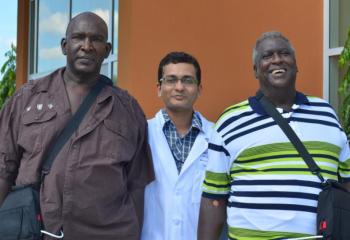Are Black Babies More Likely to Develop Cerebral Palsy?


The racial disparity in healthcare is a well-known problem in the United States, but recognizing an issue and actively working to close that gap are worlds apart. Cerebral palsy, a group of developmental disorders that impacts more infants than anything else, has been shown to affect different races and communities disproportionately. Black infants are at a higher risk of cerebral palsy than white and Hispanic infants for several reasons.
What is Cerebral Palsy?
A group of permanent movement disorders, cerebral palsy starts to show signs in early childhood. People who are suffering from cerebral palsy experience a wide range of symptoms and difficulties. Most cases show problems with muscle development or growth, coordination problems, and communication issues.
Difficulties with Diagnosis
Diagnosis is difficult in the early stages of life, and while many cases are detected in the first two years of a child’s life, in underserved communities, it may not happen until five years or later. Generally, an assessment of movement capabilities can give medical professionals the information needed to diagnose.
If you think your child’s diagnosis was delayed or it was incorrect, you should speak to a Detroit cerebral palsy lawyer. They can help you review your legal options because you may have been the victim of medical malpractice. If there was negligence on the part of the physician or administration and it delayed your child’s diagnosis or treatment, you might have a case. Delays in treatment can set back a child’s development and impact their entire life.
Early Treatment Options
As soon as a diagnosis is reached, you can assemble a comprehensive treatment plan for your child. People with cerebral palsy often need ongoing physical therapy for their gross motor skills and occupational therapy for their fine motor skills. Many people with cerebral palsy also need assistance communicating, especially with a late diagnosis. Speech therapists can assist with communication skills.
Adaptive technology and devices can help a child with cerebral palsy keep up with their classmates and eventually have an independent adult life. Hearing aids, mobility devices, and adaptive tools for daily life or hobbies are available or can be custom-designed based on an individual’s development.
Risk Factors for Cerebral Palsy
There are a number of factors that can increase the risk of cerebral palsy, many of which are linked to pregnancy or birth conditions. Multiple gestations in one pregnancy, like twins or triplets, increase the risk of at least one being impacted. Pregnancies where a twin or triplet dies before or shortly after birth greatly increase the risk of the other infants developing cerebral palsy.
Infections during pregnancy that impact the womb can lead to brain damage in the fetus. If an expecting mother has a high fever during pregnancy, it can also cause brain damage in the fetus. Different blood types between the mother and child can also cause the mother’s body to fight the fetus like an infection, damaging the brain and blood.
Genetics is a small factor but do not overwhelmingly determine which children develop cerebral palsy. Premature birth and low birth weight are some of the greatest risk factors for cerebral palsy, which leads us to the next point.
Why are Black Infants Disproportionately Affected?
The higher rates of cerebral palsy among black infants is linked to the prevalence of risk factors during births and deliveries. One of the top risk factors for cerebral palsy is a low weight at birth, something which black infants experience much more than white and Hispanic infants. If you only look at data for low-weight infants, however, black infants are actually less likely to have cerebral palsy than whites.
Another reason for the racial disparity among cerebral palsy cases is the amount of prenatal care and maternal education available in different communities. Predominantly black communities and areas are historically underserved by the health care industrial complex and in community education.
Increasing the availability of quality prenatal care and support for expecting mothers should drop the rate of cerebral palsy among black infants to the same or a lower level than that of whites or Hispanics.





